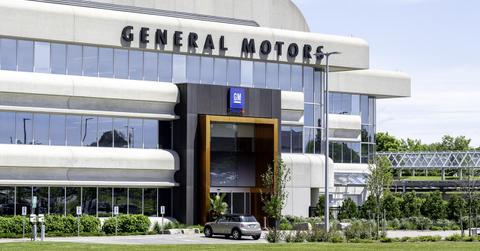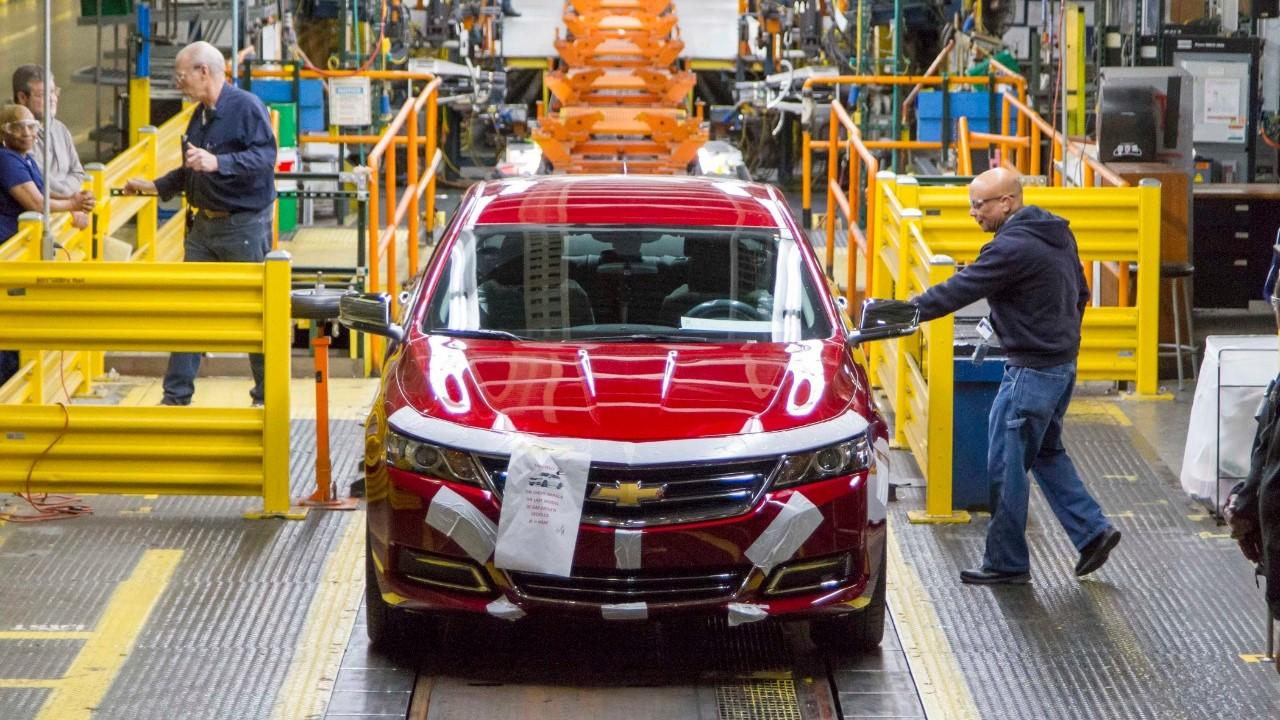Is General Motors in Financial Trouble?
The coronavirus pandemic has brought virtually every industry to a standstill. Is General Motors in financial trouble?
Nov. 3 2020, Updated 3:33 a.m. ET

General Motors is one of the big three Detroit automakers. The company has a long history of business and has weathered past ups and downs with resilience, including the 2008 bailout. With the current pandemic-induced downturn, is General Motors in financial trouble again?

Is General Motors still in Detroit?
General Motors, the iconic U.S. automaker, is headquartered in Detroit. It's one of the auto giants in the city. Detroit-Hamtramck is situated between Detroit and Hamtramck, Michigan. In 2020, GM revamped the plant and renamed it Factory Zero after its vision of “zero emissions, zero crashes, and zero congestion.”
Now, the plant will only be utilized by the company to manufacture electric and autonomous vehicles. General Motors has spent nearly $2.2 billion to retool the factory to build EVs instead of gasoline vehicles. During 2019, General Motors planned to close the facility but changed its course after discussions with the United Auto Workers Union. Currently, the company has a significant presence in Detroit through this plant.
General Motors has 118 facilities and 11 of them are assembly plants. The company's other manufacturing locations in the U.S. include:
- Lordstown, Ohio
- Fairfax, Kansas
- Orion, Michigan
- Wentzville, Missouri
- Flint Assembly, Michigan
- Arlington, Texas
- Bowling Green, Kentucky
- Fort Wayne, Indiana
- Lansing Grand River, Michigan
- Lansing Delta Township, Michigan
General Motors also has manufacturing plants outside the U.S. The plants are located in the UK, Spain, Hungary, Austria, Poland, Germany, Australia, Canada, Thailand, India, Korea, Vietnam, Russia, Mexico, China, and Indonesia.
Does China own General Motors?
There are some rumors that China owns General Motors. However, that isn't true. During the downturn in 2008, General Motors filed for bankruptcy protection and it was bailed out by the U.S. government. Under the conditions of the bailout, the company was prohibited from spending aid on its foreign operations. The company turned to SAIC (Shanghai Automotive Industry Corporation) for help and had to sell some stake to the partner.
Even after the bailout, the U.S. government owns one-third of General Motors. In 2010, the company's new ownership structure emerged. Now, three individuals hold a significant stake in the company. According to the SEC filing in February 2018, General Motors CEO Mary Barra is the largest individual shareholder. Mark Reuss, the executive vice president of GM, is the second-largest shareholder. Dan Ammann, president of General Motors is the third-largest shareholder.
President Trump has also raised the issue of General Motors expanding in China at the cost of its operations in the U.S. He tweeted, “General Motors, which was once the Giant of Detroit, is now one of the smallest auto manufacturers there. They moved major plants to China, BEFORE I CAME INTO OFFICE. This was done despite the saving help given them by the USA. Now they should start moving back to America again?” However, his claims had factual inaccuracies.
General Motors sells more cars in China than it sells in the U.S. China is the world’s largest automotive market. It has growth opportunities that are lacking in the U.S.
Is General Motors in financial trouble?
The ongoing coronavirus pandemic has landed the U.S. automotive industry in a downturn with idled plants, stay-at-home orders, and launch delays. Even before the COVID-19 pandemic, traditional automakers found themselves in a tough spot amid consumers’ shifting preference towards electric and autonomous vehicles. Traditional automakers' market share, including General Motors and Ford, is going down.
General Motors lost $806 million during the second quarter of 2020 and burned through $7.8 billion in cash. General Motors CEO Barra termed the second quarter as “one of the most challenging.” The company has already suspended dividends and also withdrew the guidance for 2020. However, the company is in no more financial trouble than other traditional automakers.
In fact, after aggressive cost-cutting and exiting unprofitable markets like Europe, General Motors has positioned itself strongly to weather any downturn. At the end of the first quarter, the company had $33.4 billion in liquidity, which should provide a cushion during the downturn. General Motors noted that all of its truck and full-size SUV plants have returned to three shifts in the U.S. The company also has one of the highest profit margins among its peers.
General Motors is also working towards its vision of “zero emissions, zero crashes, and zero congestion,” which means focusing on vehicles of the future including EVs and autonomous vehicles. Like the 2008 downturn, the focus isn't on General Motors' ability to survive, but how soon it can thrive.
